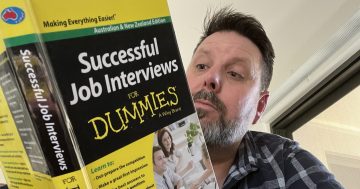May Busch*, once perceived as a ‘nice Chinese girl who won’t make waves’, shows how she managed to boost her career by creating a more positive image of herself.
 These days, it’s more important than ever to be able to manage people’s perceptions of you.
These days, it’s more important than ever to be able to manage people’s perceptions of you.
Whether it’s when you’re interviewing for a job or getting senior managers to notice you in the right way, managing perceptions is the key for career success.
As I was working my way up the organisation, I started noticing that people were perceiving me in ways that weren’t completely favourable.
They’d look at me and see a short Chinese woman and assume that “she must be hardworking and great at math, but very humble and won’t say much”.
Not exactly the description for someone on the fast track, and my career suffered for a while.
Then I discovered that being able to manage the way others perceive you is a key career skill.
But how do you go about doing it?
A great way to manage perceptions is to create your own narrative.
This is simply a storyline about who you are, what you bring to the table and what people can expect you to be like as a colleague, leader or team member.
The reason it’s so powerful is that when people don’t have information, their brains automatically fill in the blanks.
That means they make up their own stories about you.
Instead, you want to fill their heads with a more accurate story: That’s where creating your narrative is essential.
You might be wondering where your resume fits in. Isn’t that where you’re supposed to tell the story of your career?
The reality is no one gets a job or promotion based on their resume alone.
While your resume plays a role, it’s more about a list of what you’ve accomplished.
As someone who has read a lot of resumes, it can feel like one person’s list of accomplishments could just as well apply to many others.
In contrast, your narrative is about your ‘why’ and a little about the ‘how’ you go about things.
It’s your stories, not the facts, that will give people insights into who you are.
Your narrative is what brings you into vibrant 3-D focus while your resume represents you in 2-D.
The stories you tell need to feel authentic to you and share insights into the real and amazing person that you are.
Earlier on in my career, interviewers, senior managers and colleagues would often dismiss me as a “nice Chinese girl” who worked hard and won’t make waves.
I remember sitting in an interview, feeling frustrated that the interviewer was clearly still sceptical about my drive and toughness.
Out of desperation, I found myself telling him about my family and the long line of high achievers I was trying to live up to.
My father, who is a leading scientist in his field; my mother, who became a paediatrician at a time when very few women went to medical school.
Then there were my uncles, who held senior Government roles, and my grandfather, who was a university president.
As I spoke, the interviewer leaned forward in his chair and nodded. This was something he could relate to and I ultimately got that job.
Another story that’s helped me get the point across about my drive and love of a challenge is from our family trip to Rome.
As we walked through the city, I kept noticing long flights of stone steps that connected one part of the city with another road higher up the hill.
When I looked at them, all I wanted to do was to sprint up them as fast as I could, get to the top, then come back down and do it again.
In fact, I actually did that ‘double session’ while my family waited at the bottom step.
So give yourself permission to think broadly about which stories to use.
They can come from any part of your life, as long as they’re true.
You’ll find it useful to have multiple narratives to suit specific situations and points you want to make.
As part of the human species, you are a born storyteller. And the best stories are probably the ones you take for granted as being not that interesting.
If you struggle to find stories that highlight the perceptions you want to establish, ask people who know you well for help.
Assuming they have accurate perceptions of that particular characteristic you want to convey, they’re likely to be able to give you examples of when they’ve seen you exhibit your famous creativity, persuasiveness or leadership.
Then sift through them and see which you want to try out first.
Stories are meant to be told, and they will only get better if you tell them. So don’t wait to unveil them.
If you’re uneasy, then start with trusted friends or total strangers you’ll never see again, but do practice your stories out loud. Notice people’s reactions.
Make adjustments and tell the stories again. Rinse and repeat.
Keep revising until you feel comfortable that the narratives you create represent the real you.
Something amazing happens when you finally get down to the set of stories that feel true to you.
The only way to find them is to put them out there and see how they feel and how they land.
Just make sure you use the stories you create so you can keep improving them and learning which ones work best with whom and at what times.
*May Busch works with smart entrepreneurs and top managements to build their businesses. She can be contacted at [email protected].
This article first appeared at maybusch.com.











